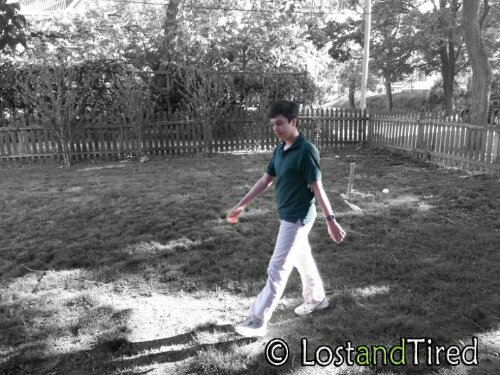Gavin actually had a really good day. No tantrums or significant behavioral issues. In fact, he’s actually the only one of the three that listened today.
Lizze even wanted to reward his good behavior. 🙂
It’s not that the others boys were a problem, it’s just that they are going through a rough transitional period. They are adjusting to Gavin being home and now school being out for the summer.
Gavin’s never really seemed to struggle to much with change.
He kinda carries his world with him, wherever he goes. This really minimizes the impact of a change or disruption in routine.
It’s one of the little blessings that we’ve received, as it makes life easier for him and for us.
Great job today Gavin.
Also, I wanted to add something about this whole Lego thing. I know that pulling Legos from Gavin seems mean or unfair. However, I know Gavin and I assure you that this isn’t going to impact him, one way or the other.
This is anther example of why Gavin is so challenging to discipline. Nothing really phases him. He simply doesn’t care. Take away the Legos, he will just do something else.
Over the years, we go through these cycles were we rotate things away from him, in order to get him to explore new things..
In a way, this is actually a relief for him because now the boys aren’t hounding him to build them things.
From the outside, it’s not always easy to see that there is a method to the madness, but I promise you, at least 90% of the time there is…… 🙂
This site is managed almost exclusively via WordPress for Android. Please forgive any typos as autocorrect HATES me. 😉
Visit the My Autism Help Forums
To reach me via email, please Contact Me
Discover more from The Autism Dad
Subscribe to get the latest posts sent to your email.





I notice Gavin is wearing a t-shirt. You say he’s usually cold, even in the summer. I’m glad he felt warm for once.
MeaghanGood He was fine that day. We did however, have to have him remove the long sleeve shirt underneath. 🙂
I’m interested in a question a poster asked earlier about how you are re-establishing attachment with Gavin. I have a similar problem, and I have to admit that I don’t have a terrifically detailed plan in place. Mostly I concentrate on being a safe person to be attached to (being non-threatening and non-judgmental), and on establishing routines of one-on-one time. I also do what you do, which is to praise success wildly, especially when that success is interpersonal (“wow that was great the way your supported X. I bet that made them feel good” kind of thing). Do you have any recommendations on this front?
dotdash The whole concept of attachment it a bit confusing. If we had succeeded in placing Gavin into residential care, he would have received a very intense therapy. Basically what happens is that when a child is very, very, very young, they cry to get attention. In most cases, those cries are heard and the needs are addressed. However, when they aren’t address or no one responds to the childs cries, there are neuropathways that simply aren’t created.
In Gavin’s case, it’s believed that this happened for years and years while enduring forced visitations with his biological father and paternal Grandmother.
In reality it’s way more complex than this but in a nutshell……..
The only treatment that we are aware of is to basically strip the child of every ounce of control they have. They essentially have to ask permission from the authority figure to do anything. When they ask permission they are met with a response and are given permission. What this does is teach the child that they can rely on someone other than themselves to get their needs met.
Does that make sense?
Supposedly, there is a very brief window of opportunity in which to seek this treatment before it becomes too late. From what we are told, this has to be done by the age of 15 to even have the slightest chance of sparking those connections. Even if successful, it’s not a cure. it does however, help the person to build more healthy relationships and gives them the tools they need to thrive.
Again, this is just my understanding and because this is not common, there simply isn’t much information out there.
dotdash Are you talking about improving your child’s ability to attach to you or improving your child’s ability to form attachments in general? I use a lot of play based therapy, forming a relationship by meeting the child at their level then gradually challenging the child and proving that I’m there for them (as a therapist). It’s a very slow process, it can take 12 months + to see any kind of progress. With older kids I do a lot of education around emotions and relationships, what makes them happy/sad/angry/scared and the same for each member of their family. This is particularly important in highlighting how their behaviour may be affecting other members of the family and the fact that other people have feelings and different things make them happy/sad etc. We use a lot of visual concepts like “putting a smiley face in someone’s head” ie making them happy/think happy thoughts about you. This is kind of rambling and disconnected but hopefully some of it is useful. In my defence, it’s a public holiday 🙂
julh dotdash thanks for you ramblings 😉
Thank you very much, both of you, for your comments. Very useful.